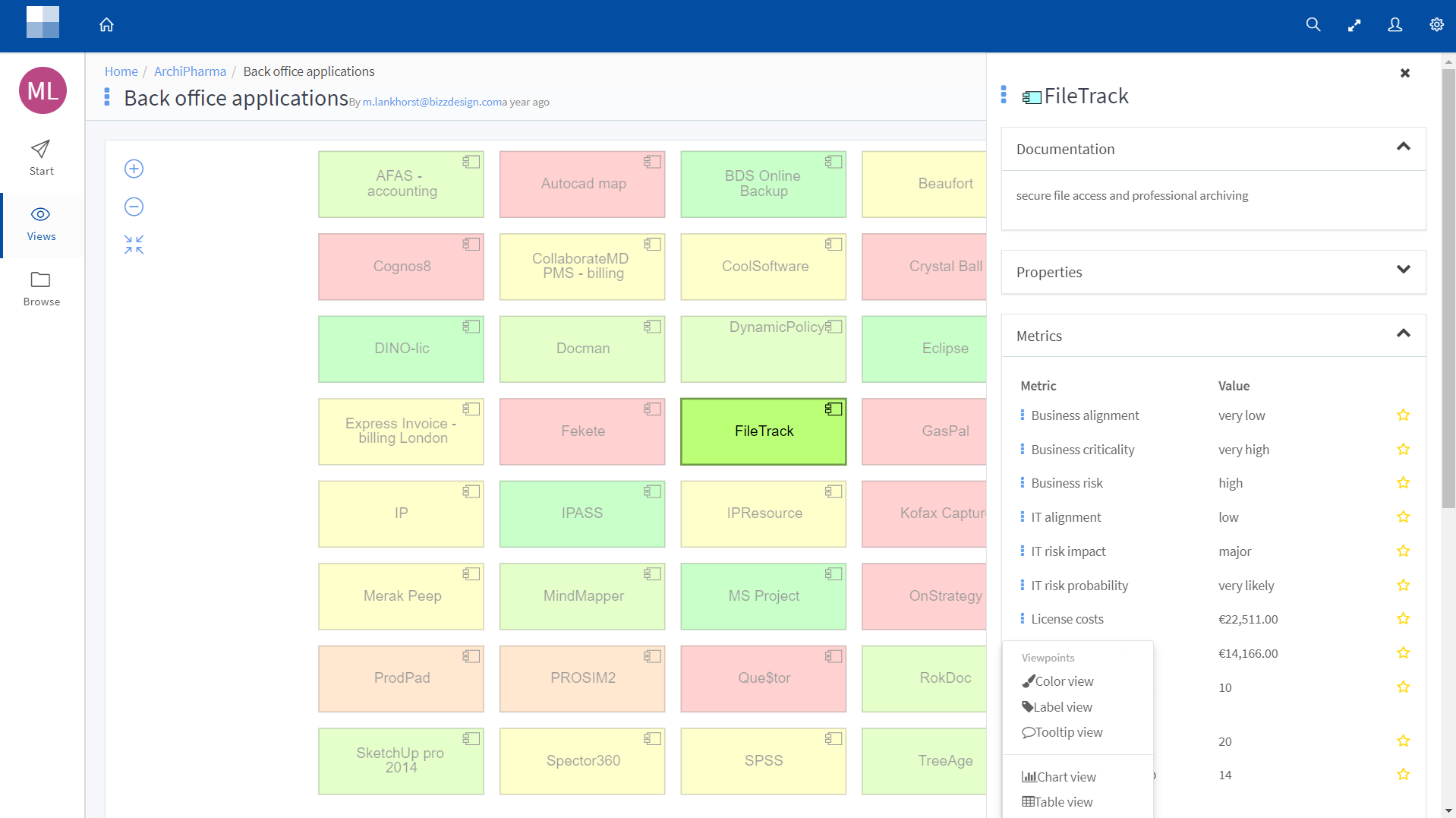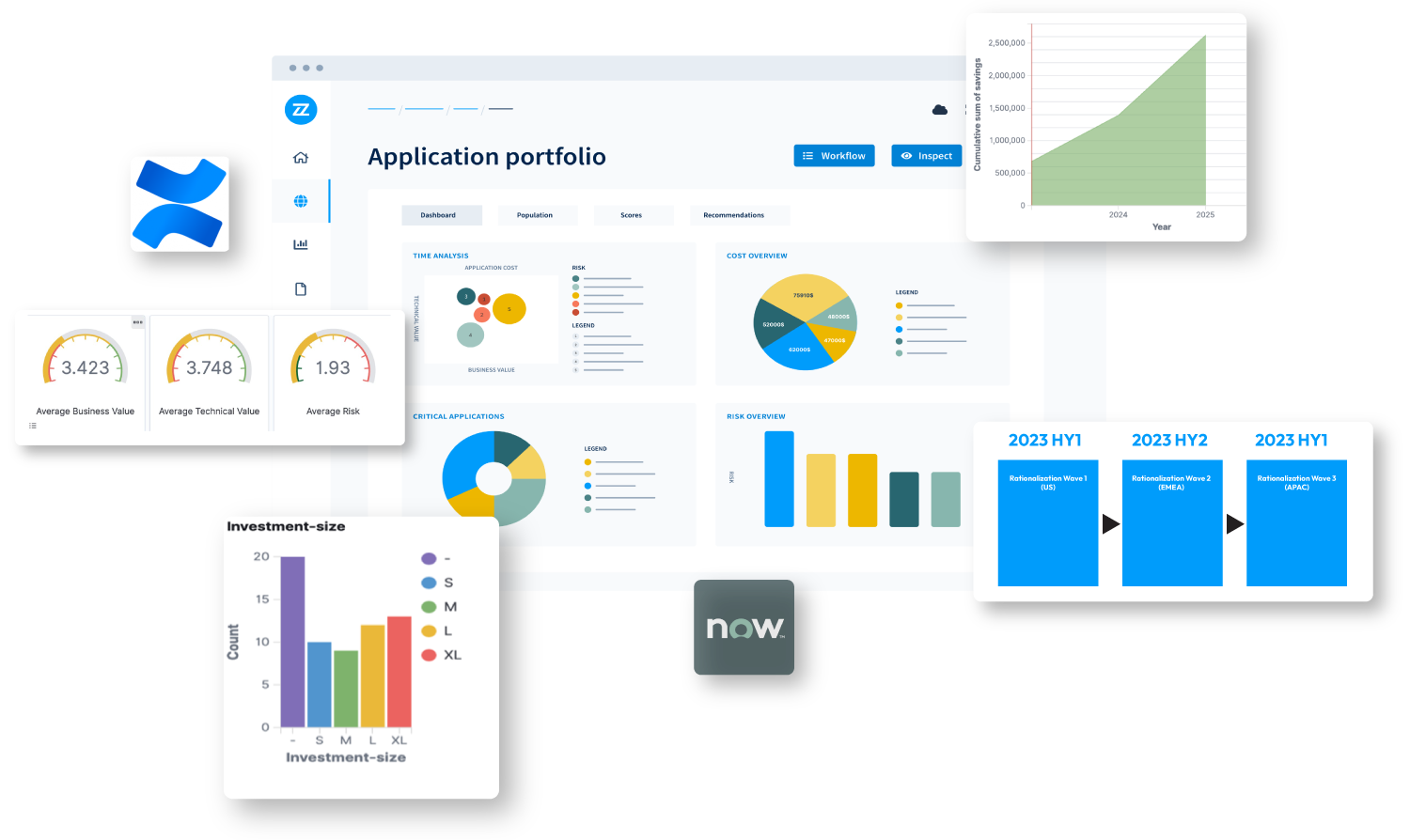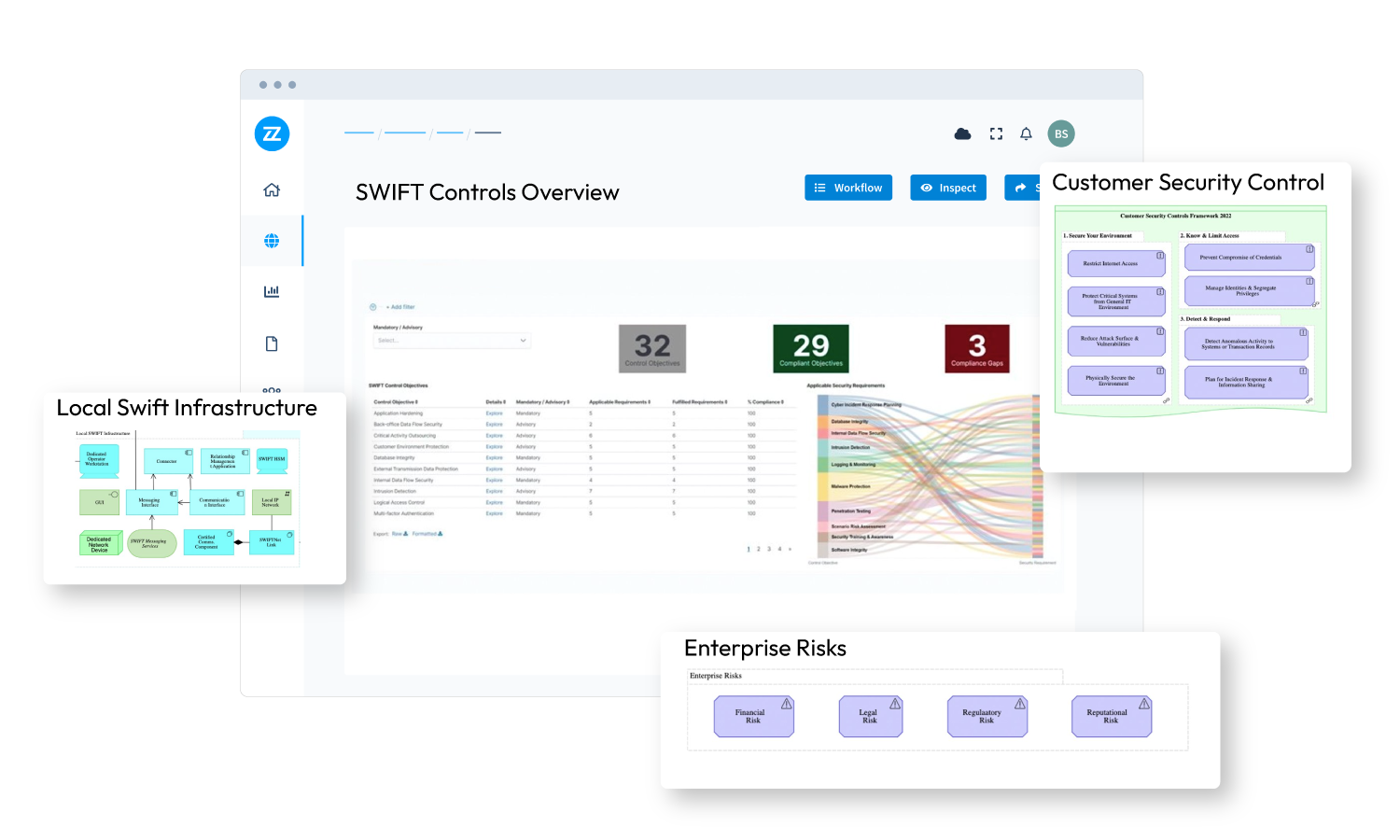Creating an Agile Enterprise Architecture Management Capability




Book a call with us
Book
a demo
GUIDE
1. Define your EA value streams and capabilities: Strive for maturity
2. Create a set of EA services: Repeatable work gets the job done faster
3. Set up a federated team: Knowledge-sharing and collaboration
4. Measure the EA team’s success: Create strategic value
5. Deliver continuous improvement: Connect value the C-level can relate to
6. Adopt agile working tools: Automation and integration


Many of our customers ask for our advice on how to create an agile Enterprise Architecture Management (EAM) capability in their organization. They aspire to become agile, but don’t know how.
Today’s organizations need to have the ability to adapt to changes continuously and they need to become agile. Enterprise Architecture Management (EAM) is a proven driver to enable enterprise agility. As architects, we have the distinct advantage of having a bird’s eye view of the entire enterprise. We can identify the strategic impact of change on business and technology landscapes and design architectures to help organizations scale up or down while minimizing disruption and shortening time to value.
To support the changing behavior of organizations moving to agile styles of delivering capabilities, the EA practice too must be agile.
There are many different aspects to having an agile EAM capability. For example, being agile goes well beyond technology architecture. An agile EAM capability isn’t just about delivering traditional services, such as installing microservices to quickly build APIs or assembling the required engines that need to connect.
To drive agile EAM, architects need to achieve a proper balance. It’s a delicate balance between driving change in the organization in an agile style and providing oversight to ensure traditional EA outcomes, focusing on aspects such as reuse, consistency and optimization through standardization.
To establish agile EAM, EA teams must have a strong foundation built on best practices.

Agile Maturity: Organization vs.
Enterprise Architect Team

Agile Maturity: Organization vs. Enterprise Architect Team
Source: 2022 State of the EA report
The 2022 State of the EA report revealed that EA teams appear slightly behind their organizations in adopting agile work practices. EA teams were more likely to be at levels one and two and less represented at levels three and four (in the above image). These results show the need for creating an agile EAM that is measurable and mature on an ongoing basis.
6 Essential building blocks for creating
an agile EAM capability
1. Define the value streams and capabilities of the EA practice: Strive for maturity
A key notion of enterprise architecture is to apply Capability-based Planning to the organization. Business capabilities describe what the business does or is able to do. It doesn’t describe how, where or when the business does this, so they’re independent of implementation details.
Apart from conducting Capability-based Planning for the organization, the EA practice also needs to determine its value streams and capabilities (as part of the overall capability structure of the organization). We suggest applying Capability-based Planning to the EA practice regularly. This enables you to attach value to your activities, which you could report to the management team.
Tip! Watch our vlog to answer:
What is Capability-based Planning?
How to apply Capability-based Planning to your EA practice? As a start, identify specific value streams, from strategy to enterprise design, which allows you to have a seat at the boardroom table during discussions about your organization’s strategic direction. Then, identify your practice’s capabilities, understand their maturity and priorities and how they relate to their corresponding value streams. Once you’ve accomplished this, you could look at assessing the gaps in your capabilities and define a roadmap with EA goals for a specific time period, such as a year.
Finally, identify the EA team’s goals and their impact on specific capabilities. You’ll then know where to focus your attention on your roadmap to make improvements and close gaps. Prepare a business case for management in which to invest: Define the investments for each of the value streams and ensure that it’s budgeted and supported by C-level management.

Source: Bizzdesign Horizzon
Bizzdesign Horizzon and best practices support the capabilities described in this image
2. Create a set of EA services: Repeatable work gets jobs done faster
Once you’ve defined the value streams and capabilities, you might want to think about developing a set of services (other than the EA practice’s traditional services) for the organization to consume, depending on your business model. Each service is made up of EA capabilities. Treat these services like any other services delivered to customers, with formal ownership and management.
Organize these EA services according to well-defined value streams that create value for customers and the organization. These services focus on delivering best practices and an outcome-driven approach that produces measurable customer value on a regular, repeatable basis.

Solution Architecture Management helps Solutions Architects work smarter and faster while ensuring a great design experience.
Bizzdesign Solution Architecture:
Designing Better Solutions
Watch Now
Tip! When defining your services, define a set of predefined business questions to respond quickly to requests. For example: “How can we improve our digital customer interaction?” Then think about what capabilities and services the EA team have to help address this question.



3. Set up a lean federated team: Work smarter and get work done faster
In some EA practices, a few practitioners typically gather and manage huge mountains of data to produce standard reports to stakeholders. A more agile approach is to form a federated EA organization. Instead of focusing on a few EA team members gathering all the data and doing all the work, establish a federated team with members from across the organization who already own and manage data for their specific business segments. Virtually connect these team members to the EA team. This removes the responsibility from the EA team to own and manage data and transfers it to the business segment owners.
Align federated team members not to projects but to the value streams and/or the lines of business in which they are subject matter experts. For example, you may have individuals who are experts in Strategy and Investment alignment (which is a value stream) or in Supply Chain Management (which is a line of business). They could provide expertise in this area to assist in transformations and then identify key integration points to the Enterprise Architecture focus efforts to ensure key intersections between their area and the rest of the organization. Often the individuals already work for a specific line of business to which they can align.
Tip! Read more about the Data Contribution feature in Bizzdesign Horizzon. Stakeholders across the organization can contribute to and manage data.

4. Measure success: Create strategic value
Agility is not just about working faster but also about defining the value of the EA practice. The EA team must show that they represent value to the organization by helping executives strategically align initiatives and investments.
A way to do this is by defining metrics and KPIs to explicitly measure the value of the EA services you provide and the value streams they support. For example, assess how often these services have been used, customer satisfaction, and measure the value these services have provided to the organization in terms of increased revenue and cost and risk reduction. Once you’ve measured the services, you can improve based on your assessment data.
Source: Bizzdesign Horizzon
Bizzdesign Horizzon manages and measures EA services
5. Deliver continuous improvement:
Connect to value the C-level can relate to
Now that you’ve defined measurements, you need to ensure visibility of this to business leaders who control the budgets to ensure continuous investment for these services. Ultimately, they may not care how often you’ve delivered the service. They care about how the service has contributed to the bottom line. If you can show that there is a benefit, you’re more than likely to
get budget that you can reinvest in the enhancements needed for each of the EA services and underlying capabilities – it’s important to show value continuously. Some organizations might consider internal charges for using the EA services to support investment and continuous improvement.
Source: Bizzdesign Horizzon
Use the Dashboards in Bizzdesign Horizzon to show how the EA team contributes to value categories. Revenue generation is measured in terms of hard numbers. Cost reduction is a soft number where there is a possibility to save a certain amount based on risk or cost avoidance.
6. Use agile EAM software: Automation and integration
Agile EAM is built based on people, process and technologies. To ensure agility, you need your EAM capability requirements to be supported with the right software. Some technology practices use office tools (for example, Microsoft Excel, Word, PowerPoint and Visio) to try and run their EA programs. This creates static outputs that immediately become stale and aren’t reusable. For effective EAM, you need to move beyond this approach and use a repository-based solution that provides more value and benefit: you need the ability to generate outputs automatically and integrate data without effort.
Bizzdesign Horizzon supports agile EAM capabilities – our modern EA software allows for flexible automation of your review and approval workflow and enables you to collect feedback along the way. Essentially, our platform permits collaborative development during the review process and stores artifacts in a centrally managed repository for archiving and compliance purposes.
In addition, a team is slowed down when data needs to be recreated manually. Bizzdesign Horizzon allows teams to integrate data ‘at their fingertips’ from sources of record. We have an integration framework that uses common technologies such as the rest API. An example is our Bizzdesign Integration for ServiceNow application, where data from ServiceNow is easily integrated with our platform.

Tip! With Bizzdesign Horizzon, it’s possible to generate outputs in 30 seconds which sometimes take 6 hours to compile manually. For example, you can automatically generate architecture diagrams to set the baseline for your design work.



Agile & EA: Opposites Attract

State of EA Report Reveals a 4 Dimensions Agility Gulf
BLOG

Agile ArchiMate®: Intentional Architecture
BLOG
Conclusion: Make your team relevant
An agile EAM practice works towards specific goals by defining a common set of capabilities and value streams in line with the organization’s strategic direction. They offer EA services to the organization that they deliver consistently to streamline onboarding and optimize skills. They make their activities measurable and ensure continuous improvement of their services.
When you build an agile EAM practice using the building blocks described in this guide, your team will become relevant to the organization. Your team will be producing and measuring value against what matters: revenue and costs.

Recommended watching: Harnessing the data you have and putting it to work
Watch this video to see how to integrate data from Jira, ServiceNow and Aptio in Bizzdesign Horizzon and how to formulate outputs from combined data quickly.










Essential building blocks for agile Enterprise Architecture Management (EAM):
Let's show you how Bizzdesign Horizzon can help your team to become agile.
Recomended Solutions
Bizzdesign offers prescriptive and predefined out-of-the-box solutions to help you develop your own set of repeatable services. Check out:
Start gaining control of your application landscape with full transparency into your portfolio. Take transformation analysis and design to the next level.
Application Portfolio Management Plus:

Complete Swift CSP Attestation faster and at a substantially reduced cost. Our solution includes a pre-packaged set of CSP control models, dashboards and scripts built on our enterprise architecture platform, Bizzdesign Horizzon, which also allows you to leverage existing architecture models
SWIFT CSP Compliance Solution:














Learn from these
related resources
WATCH NOW
Agile Enterprise Architecture Management: Best Practices
ON-DEMAND WEBINAR
Define your EA value streams, set up a federated team, and deliver continuous improvement
ON-DEMAND WEBINAR